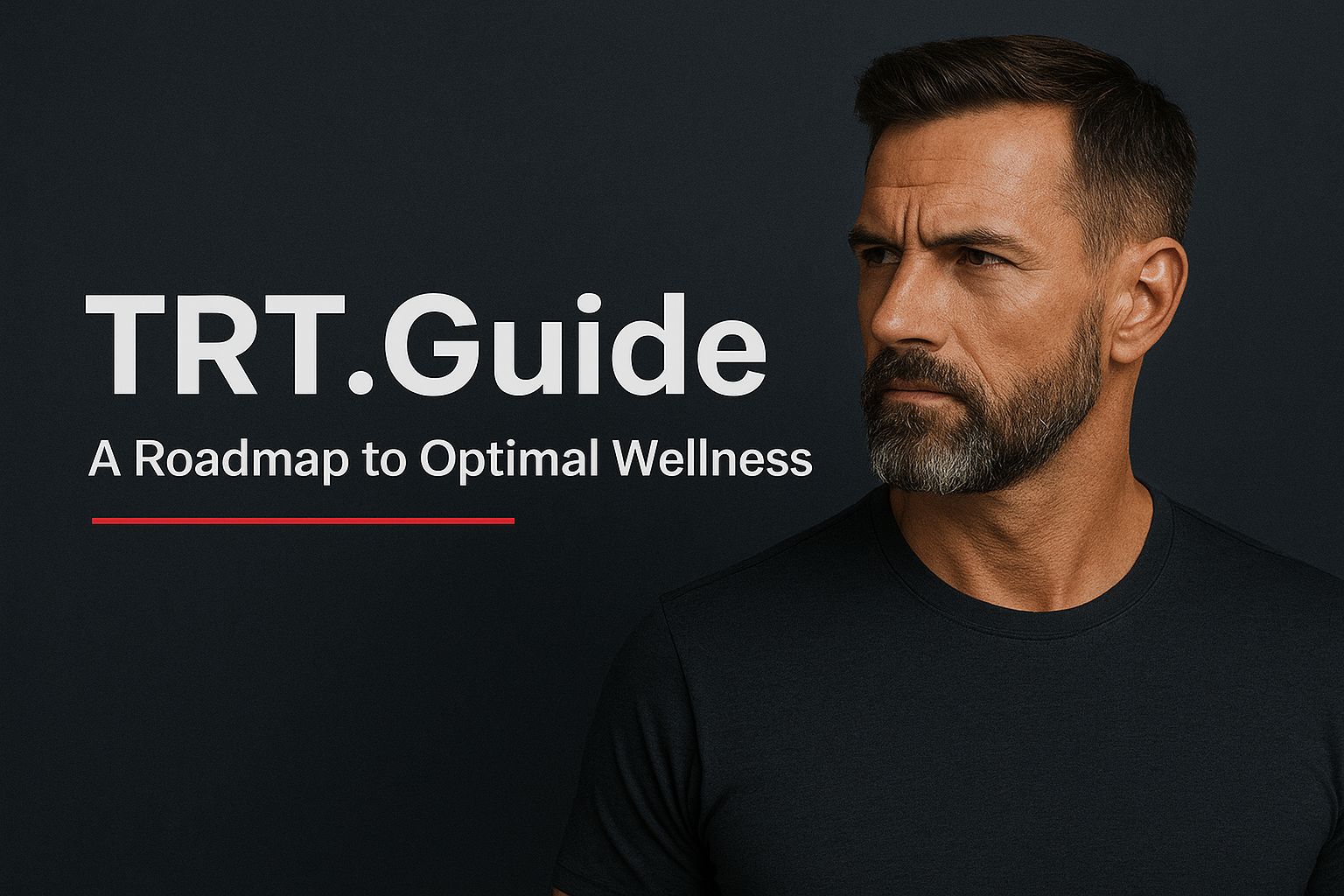Feeling fatigued, moody, or just not like yourself lately? You’re not alone. Many men in Austin are discovering the benefits of testosterone replacement therapy (TRT) to regain their vitality and improve their overall well-being. As testosterone levels naturally decline with age, it can lead to a range of symptoms that affect your quality of life.
In Austin, a growing number of clinics are offering personalized TRT solutions tailored to your unique needs. Whether you’re dealing with low energy, decreased libido, or muscle loss, these therapies can help restore balance and enhance your daily performance. Dive into the world of testosterone replacement therapy and explore how it can transform your life for the better.
Overview of Testosterone Replacement Therapy
Testosterone Replacement Therapy (TRT) involves administering testosterone to men experiencing low levels of the hormone. This therapy aims to alleviate symptoms like fatigue, irritability, and reduced libido.
TRT options vary, including injectable testosterone, transdermal patches, gels, and pellets implanted under the skin. Each method offers unique advantages and can be tailored to fit your lifestyle. For instance, injectable forms often provide quick results, while patches and gels offer convenience and ease of use.
Understanding the process begins with a comprehensive evaluation. Clinics in Austin conduct blood tests to measure testosterone levels, coupled with medical history assessments. These steps ensure personalized treatment plans that match your specific needs. Conditions like hypogonadism or other hormone deficiencies may also be evaluated.
Your healthcare provider will monitor progress throughout the treatment. Regular blood tests help assess hormone levels and determine the effectiveness of TRT. Adjustments may be made based on individual response, including dosage changes or alternate methods of administration if necessary.
Potential benefits of TRT include improved energy levels, enhanced mood, increased muscle mass, and improved sexual function. Many patients report having a heightened sense of well-being and vitality after commencing therapy. It’s crucial to discuss all potential risks and side effects with your healthcare provider, including increased red blood cell count and possible cardiovascular implications.
TRT clinics in Austin prioritize patient education, ensuring you understand the therapy’s implications. They provide support throughout your journey, addressing any concerns you may have to foster a safe and effective treatment experience. Successful outcomes stem from open communication with your provider and adhering to the established treatment plan.
Testosterone Replacement Therapy represents a viable option for those facing the challenges of low testosterone levels. By finding a reputable clinic in Austin and collaborating closely with healthcare professionals, you can take proactive steps toward improving your quality of life.
Benefits of Testosterone Replacement Therapy Austin, TX
Testosterone replacement therapy (TRT) offers several potential benefits for men experiencing low testosterone levels. These advantages can significantly enhance your overall quality of life.
Improved Energy Levels
TRT can lead to notable improvements in energy levels. You might notice reduced fatigue and increased stamina when engaging in daily activities. Men undergoing TRT often report a revitalized sense of vigor that allows for improved performance in both work and personal life. Research shows that men on TRT experience a marked increase in motivation and focus, contributing to overall productivity. Regular monitoring of testosterone levels ensures that you receive the optimal dosage, maximizing the benefits and minimizing any adverse effects. You’ll likely find that the emotional fatigue associated with low testosterone diminishes, helping you feel more enthusiastic and engaged in social interactions.
Enhanced Mood and Well-Being
TRT can also positively affect mood and emotional stability. Many men report reduced feelings of irritability and depression after starting treatment. Studies indicate that optimal testosterone levels correlate with increased feelings of well-being, improved self-esteem, and reduced anxiety. This therapy not only stabilizes mood swings but may also enhance cognitive function and memory. As you experience mood improvements, your relationships with family, friends, and coworkers often benefit too, creating a more fulfilling social environment. The increased sense of balance and overall mental clarity supports better decision-making and productivity in various aspects of life.
Choosing a Provider in Austin, TX
Selecting the right provider for testosterone replacement therapy (TRT) in Austin involves careful consideration. You’ll want a healthcare professional with solid credentials and experience to ensure effective treatment and ongoing support.
Credentials and Experience
Verify qualifications for any provider you consider. Look for board-certified physicians specializing in endocrinology or urology, as they possess essential knowledge about hormone therapies. Experience also matters; seek providers with a proven track record in administering TRT. Those with several years of experience can better tailor treatments to your unique needs. Additionally, check for clinic affiliations with reputable medical organizations. Such affiliations often reflect adherence to best practices in patient care.
Confirm providers participate in continuing education programs to stay updated on the latest advancements in TRT. Knowledge of recent guidelines and advancements ensures that you receive the most effective, scientifically-backed treatment available.
Patient Reviews and Testimonials
Explore patient reviews and testimonials to gauge the effectiveness of providers. Look for online reviews on platforms like Google or Yelp, focusing on comments related to treatment success and overall patient satisfaction. Positive feedback from other patients can highlight provider strengths, such as responsiveness, communication skills, and treatment outcomes.
Seek testimonials that address specific aspects of TRT, including symptom relief and the overall experience with the clinic. Engaging with former patients through community forums or social media can provide further insights. Gathering this information is crucial for identifying a provider that aligns with your needs and expectations, ensuring a smooth and successful TRT journey.
Treatment Options Available
Testosterone replacement therapy (TRT) in Austin offers several effective treatment options to address low testosterone levels. Each method provides unique benefits tailored to individual preferences and lifestyles.
Injections
Injections represent one of the most common forms of TRT. You typically receive testosterone injections intramuscularly, often in the upper thigh or buttocks. The frequency of injections can vary, with many patients opting for treatments every 1 to 2 weeks. This method allows testosterone levels to peak shortly after the injection, leading to rapid symptom relief. Some men prefer injections due to their ease of administration and long-acting effects. However, you may experience fluctuations in hormone levels between doses, which some find less desirable. It’s essential to work with your healthcare provider to establish an injection schedule that suits your needs while monitoring hormone levels through regular blood tests.
Gels and Patches
Gels and patches provide an alternative, convenient form of TRT. You apply testosterone gels daily to clean, dry skin, often on the arms, shoulders, or abdomen. Transdermal patches adhere to your skin and deliver a consistent dose of testosterone throughout the day. Both options provide stable hormone levels and minimize the peaks and troughs associated with injections. While gels offer more flexibility, patches can be easier for those concerned about application consistency. These methods also reduce the discomfort associated with needles. It’s important to follow application instructions carefully to avoid skin-to-skin transfer, ensuring optimal treatment effectiveness while minimizing potential side effects.
Potential Risks and Side Effects
Testosterone replacement therapy (TRT) carries potential risks and side effects that warrant careful consideration. Ongoing conversations with your healthcare provider can help you understand these factors and manage any concerns effectively.
- Cardiovascular Issues: TRT may lead to an increased risk of cardiovascular events such as heart attacks and strokes, particularly in men with pre-existing heart conditions. Monitoring heart health during treatment is essential.
- Prostate Health: TRT can potentially stimulate growth of prostate tissue, raising concerns about benign prostatic hyperplasia (BPH) or even exacerbating prostate cancer risks. Regular screenings and discussions about prostate health are integral to treatment.
- Hormonal Imbalance: You may experience hormonal fluctuations, leading to symptoms such as mood swings, irritability, or aggressiveness. Frequent monitoring of hormone levels can help stabilize your treatment.
- Sleep Apnea: TRT has been associated with worsening sleep apnea, a condition that involves interrupted breathing during sleep. If you have sleep apnea or excessive daytime fatigue, your provider may conduct a sleep study.
- Skin Reactions: Using transdermal gels or patches may result in skin irritation. Proper application techniques and site rotation can help minimize this risk.
- Changes in Cholesterol Levels: TRT can affect cholesterol levels, increasing the risk of hyperlipidemia. Regular lipid panel tests can provide insight into how your treatment impacts cholesterol.
- Erythrocytosis: TRT may lead to an increase in red blood cell count, potentially raising the risk of blood clots. Periodic blood tests can help monitor hemoglobin and hematocrit levels.
- Infertility: TRT can suppress natural testosterone production, which may lead to decreased sperm production and temporary infertility. Discussing fertility preservation options with your provider before starting treatment is advisable.
- Weight Gain: Some individuals may experience weight gain due to changes in fat distribution and increased muscle mass. Structured dietary and exercise plans can combat unwanted weight gain.
- Liver Complications: Though rare, oral testosterone formulations can cause liver issues. Providers typically opt for safer alternatives to minimize this risk.
Recognizing these potential risks and side effects allows you to engage in informed discussions with your healthcare provider, ensuring a well-rounded approach to your TRT journey. Regular follow-ups and blood tests enhance safety and efficacy, allowing adjustments based on individual responses.
Cost of Testosterone Replacement Therapy in Austin
The cost of testosterone replacement therapy (TRT) in Austin varies significantly based on several factors, including treatment type, provider, and individual needs. Average monthly costs typically range from $300 to $800. This range includes the price of medications, consultations, and lab tests.
Treatment Options and Their Costs
- Injectable testosterone: Costs for testosterone injections often range from $150 to $400 per month. Providers administer these injections bi-weekly or monthly, making them a popular choice for those seeking consistent hormone levels.
- Topical gels and patches: Expect monthly expenses between $250 and $600 for testosterone gels or patches. Many patients prefer these methods due to ease of application and convenience.
- Implanted pellets: These pellets require an initial investment of $1,000 to $2,500. They last 3 to 6 months, providing a longer-term solution without daily applications.
Additional Costs to Consider
- Consultation fees: Initial evaluations typically cost between $150 and $300. Follow-up visits may range from $75 to $200, depending on the frequency of monitoring required.
- Lab testing: Blood tests are crucial in monitoring hormone levels and assessing treatment efficacy. Costs for lab work usually range from $50 to $150 depending on the tests required.
- Insurance coverage: Insurance plans may cover some costs associated with TRT, which can substantially reduce out-of-pocket expenses. It’s essential to check with your insurance provider for specific coverage details.
Long-term Financial Considerations
Long-term commitment to TRT often influences overall expenses. Many patients choose to prioritize their health and well-being through ongoing treatment, which underscores the importance of budgeting for these costs over time. Understanding that benefits often include improved mood, energy levels, and overall quality of life can justify the investment.
Finding Cost-effective Providers
Searching for providers who offer competitive pricing in Austin can yield cost-effective options. Evaluating clinics for package deals or promotional offers may enhance affordability. Additionally, considering the credentials and experience of a provider ensures not only quality care but also value for your investment in TRT.
Conclusion
Exploring testosterone replacement therapy in Austin could be a transformative step for you. With personalized treatment options available, you can tackle symptoms that impact your daily life. Whether you’re dealing with fatigue, mood swings, or reduced vitality, TRT offers potential benefits that can enhance your overall well-being.
Choosing the right provider is crucial to ensure a safe and effective treatment journey. By prioritizing qualified healthcare professionals, you can feel confident in your TRT experience. As you consider your options, remember that ongoing communication with your provider is key to achieving optimal results. Embrace the opportunity to reclaim your energy and vitality through informed decisions about testosterone replacement therapy.
Frequently Asked Questions
What is testosterone replacement therapy (TRT)?
TRT is a medical treatment that involves administering testosterone to men with low hormone levels. The goal is to alleviate symptoms such as fatigue, mood changes, decreased libido, and muscle loss, helping improve overall well-being.
Who can benefit from TRT?
Men experiencing symptoms of low testosterone, such as fatigue, irritability, reduced libido, and muscle loss, may benefit from TRT. It’s suitable for those looking to enhance their energy, mood, and quality of life due to declining testosterone levels with age.
What are the different types of TRT available?
TRT options include injectable testosterone, transdermal patches, topical gels, and implanted pellets. Each method has unique advantages designed to fit different lifestyles and preferences, allowing for a personalized treatment approach.
How is TRT initiated?
The TRT process begins with a comprehensive evaluation by a healthcare provider. This usually includes blood tests and a review of medical history to assess hormone levels and determine the appropriate treatment plan.
How is TRT monitored?
Healthcare providers monitor the effectiveness of TRT through regular blood tests to check hormone levels and overall health. Based on test results and patient feedback, adjustments to the treatment plan are made as needed.
What benefits can be expected from TRT?
Possible benefits of TRT include increased energy levels, improved mood, enhanced muscle mass, and better sexual function. Many men report significant enhancements in vitality and overall daily performance.
Are there risks or side effects associated with TRT?
Yes, potential risks include cardiovascular issues, prostate health concerns, hormonal imbalances, and changes in cholesterol levels. It’s essential to discuss these risks with your healthcare provider before starting TRT.
How much does TRT cost in Austin?
The average monthly cost for TRT in Austin ranges from $300 to $800, depending on the treatment type and individual needs. Additional costs may include consultation and lab testing fees, so budgeting is essential.
How can I choose the right TRT provider in Austin?
Select a healthcare professional with strong credentials, such as a board-certified physician in endocrinology or urology. Look for reputable clinic affiliations, patient reviews, and testimonials to evaluate their effectiveness and success rates.






